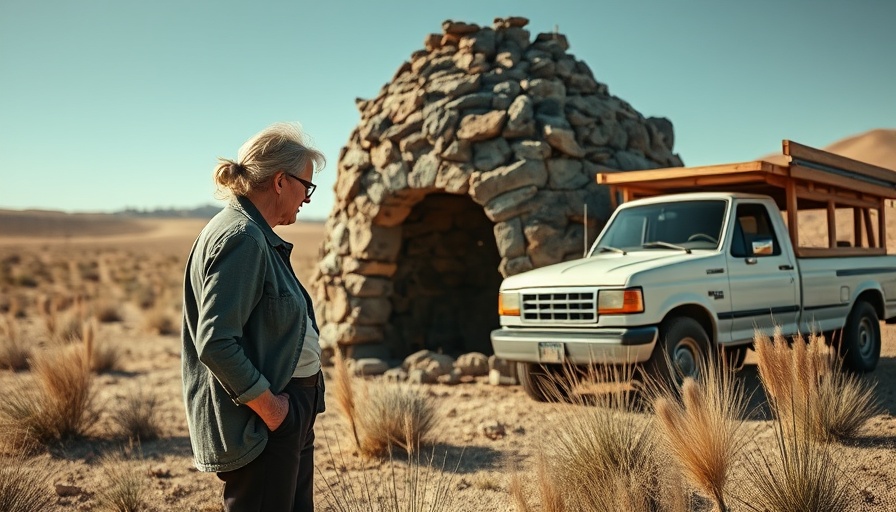
The Rising Mystery of Arsenic-Tainted Wells on the Navajo Nation
In a troubling trend, the Navajo Nation is seeing an alarming increase in the number of wells that have mysteriously emerged, posing serious health risks to its community. As residents grapple with the implications of potentially toxic water sources, the impact of this environmental crisis reverberates deeply, especially among families relying on these wells for daily sustenance.
Understanding the Risks: What Lies Beneath
Loretta Johnson, a retired nurse from Red Valley, encapsulates the challenges faced by many on the reservation. Johnson recalls visiting a familiar water well without realizing the dangers lurking within its depths. Contaminants such as arsenic have been detected in these wells, raising critical concerns about their safety for both human consumption and livestock.
The U.S. Environmental Protection Agency's alarming findings have led to heightened awareness among the Navajo community. Johnson’s reflection on the well’s water, once thought to be brackish or saltwater, now surfaces as a grave reminder of the pervasive risks embedded in seemingly innocent resources. Many families still depend on these wells for their livestock and home use, unaware of their contamination.
Historical Context: Standing at the Crossroads of Tradition and Health
The roots of this crisis run deep, as many residents draw from wells linked to cultural traditions. Historically, water has been a central element in the livelihoods of the Diné people. However, the encroachment of industrial pollutants and insufficient regulatory oversight has made maintaining safe water sources a formidable challenge. Many wells, dug by previous generations, now face disrepair, while new, possibly hazardous wells continue to be discovered across the reservation.
A Growing Concern Amidst National Issues
This local health crisis reflects growing concerns across the nation regarding water safety. Issues related to environmental policies have garnered increased attention, with reports about lead contamination in urban water systems and the ramifications of climate change on existing water supplies. Here on the Navajo Nation, however, the battle against arsenic-tainted wells takes on an urgency that highlights a unique struggle belonging to one of America's largest Native American reservations.
Community Voices: The Struggle for Clean Water
Echoing feelings in communities across America, the voices of the Navajo people speak to a broader narrative of environmental justice. Many families in the region lack access to clean water, amplifying discussions around the intersection between health, politics, and rights. Residents often feel forgotten or neglected by governmental bodies, heightening frustrations as they seek accountability and resources to ameliorate their circumstances.
Government Response: Navigating A Complex Regulatory Landscape
In response to the identified contamination, local leaders and environmental activists are pressing for increased monitoring and remediation efforts. The U.S. government faces criticism for its slow response to the contamination issue, mirroring frustrations that many have compared to other national crises surrounding public health and safety. As water quality deteriorates, many advocate for stronger federal policies to protect vulnerable populations.
Action Steps for Residents: What Can Be Done?
While government agencies work to address these issues, individual residents can take proactive steps. Accessing water testing services and advocating for community health initiatives are essential in building awareness and response strategies. Collaborations with environmental groups can enhance community outreach and education regarding water safety, ensuring people understand the risk factors that may arise from contaminated wells.
The Road Ahead: Hope and Solutions
Though challenges abound, solutions are emerging. The Navajo Nation’s initiatives to identify and remediate well water contamination take on lead roles in protecting groundwater against hazardous waste. Collective efforts among residents, environmental agencies, and governmental bodies can pave the way for a healthier future.
As Loretta Johnson drives along those familiar routes, she often reflects on the duality of her heritage—celebrating the beauty of her home while also recognizing the urgent need to protect it. For her, and for the many others in the Navajo Nation, the journey towards clean water continues.
Call to Action: If you or someone you know resides on the Navajo Nation, it's vital to stay informed about the safety of water sources. Engage with local health initiatives and advocate for change to ensure every family has access to clean, safe water.
 Add Element
Add Element  Add Row
Add Row 



Write A Comment